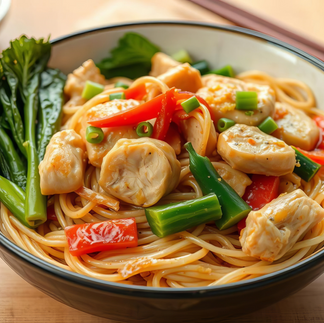Discovering Saba: The Caribbean's Most Hidden Gem
- Jacob Allen

- Mar 2
- 5 min read

Nestled in the Caribbean, Saba is often overshadowed by its more popular neighbors, but this enchanting island offers a unique blend of natural beauty, rich culture, and adventure. If you're seeking an off-the-beaten-path destination, here’s why Saba should be at the top of your travel list.
Why Visit Saba?
Saba is a paradise for nature lovers, adventure enthusiasts, and those looking to escape the hustle and bustle of everyday life. With its breathtaking landscapes, vibrant marine life, and welcoming community, Saba offers a unique experience that is hard to find elsewhere in the Caribbean. Its unspoiled beauty and tranquil atmosphere make it a perfect retreat for those looking to unwind and reconnect with nature.
Things to Do on the Island
Saba is known for its outdoor adventures and cultural experiences. Here are seven fun things to do on the island, each providing a unique taste of what Saba has to offer:

1. Hike Mount Scenery: Ascend the highest point in the Netherlands through lush rainforests and enjoy breathtaking views from the summit. The trail, which is about 1,064 steps, takes you through diverse flora and fauna, including tropical plants and beautiful birds. Once at the top, be rewarded with panoramic views of the island and neighboring Caribbean islands.
2. Diving in Saba Marine Park: Explore the underwater beauty of Saba’s marine park, which boasts vibrant coral reefs and diverse marine life. With over 30 dive sites, ranging from shallow reefs to deep walls, both beginners and experienced divers can enjoy encounters with sea turtles, colorful fish, and even shipwrecks.

3. Visit the Saba Heritage Center: Dive into the island's history and culture at this informative center, where you can learn about Saba's past and its unique traditions. The center features exhibits on local artifacts, historical photographs, and interactive displays that tell the story of Saba's people and their resilience.

4. Explore Windwardside: Stroll through this charming village filled with local shops, cafés, and historical buildings. Windwardside is known for its picturesque streets lined with gingerbread-style houses and blooming gardens. Don’t forget to stop by the local boutiques for unique crafts and souvenirs.

5. Beach Day at Well's Bay: Relax on the beautiful beach at Well's Bay, where you can sunbathe, swim, or enjoy a picnic with stunning views of the surrounding sea. The calm waters are perfect for snorkeling, making it an ideal spot to explore the underwater world without the need for scuba gear.
6. Take a Boat Tour: Join a boat tour around the island to experience its stunning coastline and perhaps spot dolphins and other marine wildlife along the way. Some tours offer snorkeling opportunities, allowing you to dive into the crystal-clear waters and explore the vibrant marine ecosystems.
7. Attend Local Festivals: If your visit coincides with a local festival, don’t miss the chance to immerse yourself in Saba's vibrant culture. Events like the Saba Carnival and the Saba Day Celebration showcase local music, dance, and delicious food, giving visitors a taste of the island's rich heritage.
Geography of Saba

Saba is a volcanic island, characterized by its steep hills and rugged terrain. The island is only about five square miles, making it the smallest inhabited island in the Caribbean. Its highest peak, Mount Scenery, rises to 877 meters, offering stunning panoramic views. The island's landscape is dotted with lush rainforests, rocky cliffs, and picturesque villages, creating a dramatic backdrop for outdoor adventures.
Culture and Language
The culture of Saba is a rich tapestry woven from its history, geography, and the influences of its inhabitants. The island has a strong sense of community, reflected in its traditional festivals and events. The official language is English, but you may also hear a local dialect known as Saban English, which incorporates elements from Dutch, Spanish, and African languages. The warmth and hospitality of the Saban people make visitors feel at home, and engaging with the locals can enhance your experience on the island.
Economy and Industry

Saba's economy is primarily driven by tourism, with the majority of the population relying on this sector for their livelihoods. The island is also known for its agriculture, particularly the cultivation of fruits and vegetables, which are often sold at local markets.
The average median salary on Saba is relatively modest, with an estimated range of $20,000 to $25,000 annually, reflecting the island's small population and limited job market. The main industries include tourism, agriculture, and some local crafts, with many residents involved in hospitality, guiding services, and artisanal work.
Local Leisure Activities

For fun, locals often engage in outdoor activities like hiking, diving, and fishing. The island hosts several community events, including festivals celebrating local culture and heritage, where you can enjoy music, dance, and cuisine. Additionally, residents gather for potluck dinners, game nights, and beach outings, fostering a close-knit community spirit.
Best Time to Visit
The best time to visit Saba is during the dry season, from December to April, when the weather is pleasant and ideal for outdoor activities. The climate is tropical, with warm temperatures year-round, averaging around 80°F (27°C). During the dry season, you can expect sunny days and milder humidity, making it perfect for hiking and exploring the island’s natural beauty.
Getting to Saba from the US

















Comments